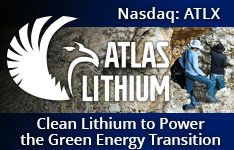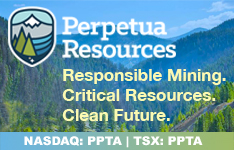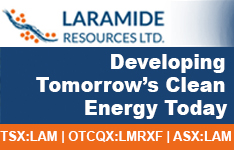The Energy Report: In your May 31 annual report, you wrote: "The most important change we have made to improve performance has been to increase the [Encompass] Fund's exposure to the energy sector, while reducing exposure to metals." Why have you done this?
Malcolm Gissen: We believe that we are now living in a golden era of oil and gas. We believe that demand for oil and gas will continue to grow faster than supply. This provides a unique opportunity to invest in companies that do not have a great deal of risk, yet boast many attractive characteristics. They are expanding production. They are expanding cash flows. They are improving exploration technology. They are reducing expenses. Internal rates of return (IRRs) often go over 100%.
TER: How are the investments in the Encompass Fund allocated by sector?
MG: Oil and gas companies comprise about 20–25%. Oil and gas field services are 2.5–4%, and natural gas processing companies are about 2.7%. Precious metals are a little under 20%. We're not solely a commodity fund, however. We've also got technology and biotech companies, as well as homebuilding, healthcare, and real estate investment trust (REIT) companies, among other sectors, represented.
TER: How much must oil and gas supply grow to meet demand?
MG: In "The Outlook for Energy: A View to 2040," Exxon Mobil Corp. (XOM:NYSE), in its annual report for 2013, predicted that global energy demand will grow about 35%, driven by growth in developing nations. By 2040, Exxon expects nine of the world's 20 largest cities will be in India and China, and that these two nations alone will account for more than 50% of the increase in global energy demand. Even as fuel efficiency increases and technologies improve, oil will remain the No. 1 fuel type, with natural gas supplanting coal as No. 2.
"Manitok Energy Inc. is an undervalued company that would be an attractive investment for a high-risk/high-return investor."
The International Energy Agency (IEA) published a special report in June on this subject. The IEA projects that spending to meet energy needs will increase from $1.6 trillion ($1.6T) in 2014 to $2T per year by 2035. The IEA report estimates that the total spent to meet the world's growing need for energy will be $48T by 2035. Less than half of that spending will be in developing new energy supply; most will be to replace declining production from existing oil and gas fields.
This bolsters our belief that investment portfolios should increase exposure to oil and gas, and helps explains why the Encompass Fund produced a 17.4% return as of the end of August.
TER: What will be the primary source of new supply?
MG: The IEA forecasts that North America—the U.S. and Canada—will provide most of the new supply into the 2020s. After that, there will be more dependence on Middle Eastern oil and gas, according to the IEA.
Marshall Berol: I would add that whatever your views about climate change, the fact of that matter is that governments around the world are moving away from coal. China, for instance, is moving toward more use of natural gas, particularly around Beijing, because of pollution. China has announced that it will be closing almost 2,000 small coal mines. And after the Fukushima earthquake, use of nuclear power to generate electricity has become politically troublesome.
TER: Isn't an increased dependence on oil and gas from the Middle East troublesome? The Islamic State in Iraq and Syria (ISIS) army has already occupied much of Iraq and has moved into Kurdistan.
MG: Middle Eastern politics have become increasingly volatile, violent and unpredictable. We think it unlikely the jihadists are going to disappear, no matter how strongly the West responds to them. They are active in Lebanon, Syria, Iraq, Pakistan, Yemen, Libya and Nigeria, among other oil-producing countries, and present a constant threat to oil supply in both the Middle East and Africa.
TER: Even as the Middle East burns, the West and Russia are ramping up sanctions against each other.
MG: Vladimir Putin seems intent on increasing instability in Eastern Europe, not just in Ukraine, and that impact is likely to grow. In 2013, the U.S. exported more than $1.5T of goods, and less than 10% of that was either crude oil or petroleum products. That same year, Russian exports of crude oil, petroleum products and natural gas amounted to more than two-thirds of total exports, and composed more than 50 percent of the Russian government's total revenue. Much of these exports go to Europe: 30% of Europe's natural gas comes from Russia. There is a real threat that this supply could disappear. If that happens, natural gas prices will likely rise, and we'll see pressure on North America to replace the Russians as suppliers of natural gas for Europe.
TER: Do you believe in the peak oil theory?
MG: No, for two basic reasons. First, we're finding more oil, and a number of those discoveries are of very large reserves, such as those off the coast of Brazil, Mexico, Russia and Australia, among other places. Oil is also being found in more remote places, often very deep in the ocean. But it is there, and it will be produced, particularly with oil selling at $90 to $110 a barrel ($90–110/bbl). Right now West Texas Intermediate (WTI), at around $94/bbl, is very profitable for oil companies. We expect prices to remain in this range—perhaps even go higher—for some time.
"Demand for oil and gas will continue to grow faster than supply."—Malcolm Gissen
The second reason Marshall and I don't believe in peak oil is that technological advances are being made that are increasing production, as exploration companies capture oil and gas from existing reservoirs that had eluded them in the past. Horizontal drilling and fracking are making that possible. We're seeing more horizontal drilling than vertical drilling now in the U.S. and Canada.
MB: That said, the technologies being utilized to increase production—horizontal drilling and hydraulic fracturing (fracking)—are more expensive than drilling was just 50 or 75 years ago, when you punched a hole in the ground and the oil came gushing out. These increased expenses, as well as a tightening of supply/demand, should result in a continued rise in oil and gas prices.
TER: After the 2008 economic crisis, we saw a drop in energy demand and a concomitant drop in prices. Should economic growth stall or fall again, won't demand and prices fall with it?
MG: There are two answers to this question. The first is that we're not traders. We're investors. We're looking at what will happen over the next 6 to 36 months. We also believe that the demand for energy in developing countries like China and India, and in Third World countries, assures that world demand will outstrip supply during any reasonable period over the next 5–10 years. There will, of course, be economic slowdowns, but we think they won't last more than a few quarters
MB: Another factor that should be mentioned is the increasing size of the middle class worldwide. In China, we're watching 250–300 million (250–300M) people move from rural areas to cities, and consume more energy. They want dishwashers, refrigerators, washers and dryers, and cars. We're seeing the same in India, as it builds infrastructure. A number of African countries are also demonstrating improvements in living standards.
TER: You have noted that because of increased horizontal drilling and fracking, the U.S. is importing less oil every year, and have argued that soon oil imports will be unnecessary. Are horizontal drilling and fracking a short-term boost to U.S. energy supply, or is this a bigger story?
MG: Fracking is not a short-term solution, but a permanent one. It is here to stay. The technology gets better and better, increasing oil and gas production and having a smaller impact on the environment. Proper regulation should ensure against environmental concerns, such as oil getting into the water table.
MB: Horizontal drilling and fracking are increasing production globally, not merely in the U.S. and Canada. We think this trend will continue. Further technological advances cannot be guaranteed, of course, but we certainly don't discount them.
TER: How much of a premium do you award oil and gas companies already in production?
MG: We look more favorably on investing in companies in production, as opposed to those still in the discovery, exploration and development stages. With regard to oil and gas companies, we like those that are increasing production, cash flow and profitability, whether due to acquisitions of new lands or companies, or both. We are looking for companies that are very profitable, that have access to all the capital they will need to continue fast-paced growth, that are applying newer technology to production of oil and gas, and that have experienced management teams with prior successes.
TER: In the mining industry, junior explorers find the metals. To what extent is increased oil production driven by oil juniors?
MG: Juniors drive production to a significant extent. Let me clarify. The large, integrated companies, such as Chevron Corp. (CVX:NYSE) or Exxon Mobil, produce enormous quantities of oil and gas, and are only interested in very large projects. In 2013, Exxon produced over 18 million barrels (18 MMbbl) of oil equivalent (oil, natural gas and natural gas liquids) per day, and had revenues of $438 billion. Exxon will only explore if the project has very large potential.
"Oil will remain the No. 1 fuel type, with natural gas supplanting coal as No. 2."—Malcolm Gissen
The juniors produce less than 10,000 barrels of oil equivalent per day (10 Mboe/d), but the juniors in which we are invested have the potential to increase that by 20–35% per year. If they are successful—and most are—their stock prices should react accordingly. In some cases the juniors are exploring areas not known to have produced oil and gas. They can do this with greater dexterity and at far lower costs than the large companies. When the juniors find oil and gas in these areas, we often see larger companies come into those basins, buying companies and driving up valuations.
In other cases, the majors sell junior companies properties that, to the majors, may seem marginal because they don't appear to have enormous resources at the time. If the junior companies prove the potential of these properties, the majors can always buy back the properties, or simply buy the juniors involved. Cash flows are so enormous in this industry, and bank lines so available, that it is not difficult for large companies to make these acquisitions.
MB: Whether it's energy, mining or pharmaceuticals, the larger companies are less innovative, less creative, and more risk-averse. It is the smaller companies that are willing to take the risks.
Some years ago, the oil majors in the U.S. and Canada sold many of their enormous land holdings and leases to smaller, more nimble companies. It is the latter that made the technological advances in exploration and development we've seen in the last 5-10 years. Now, the majors are coming back to the areas they had gotten out of.
TER: Junior mining companies have been hobbled by funding shortages for more than three years. Does this situation pertain to junior oil companies?
MG: Not to the same degree, by any means. The primary reason for the difference is that junior mining companies typically have no revenues, let alone profits. Junior oil and gas companies likely do have production—growing production. They have increasing cash flow, which gives them the ability to finance their own growth.
TER: Which junior Canadian producers do you rate most highly, particularly with regard to potential expansion?
MG: The question of potential expansion is easy to address: They're all expanding. The ones we prefer are expanding faster and more efficiently. In client accounts, we're invested in nine or 10 Canadian oil and gas companies, and in one very good company in the U.S. A number of these Canadian oil and gas companies pay very attractive dividends.
"Buyouts are an attractive way to go when all the metrics are there: properties, finances and good management teams."—Marshall Berol
A company we think should be in every investor's portfolio is DeeThree Exploration Ltd. (DTX:TSX.V), an oil-weighted name in the Canadian mid-cap space that has grown production for 11 consecutive quarters. That derisks the investment, as skeptical investors see DeeThree's success. We just met with the company's CEO, and he confirmed that DeeThree intends to grow production by about 1 Mboe/d per quarter for the next few years. The company has the resources to accomplish this for a long period of time. DeeThree has been realizing exceptional results from its Belly River wells, which should continue to be the growth engine for the company. Growth should also come from its Alberta Bakken wells. The stock looks cheap when compared to its peers. It has some of the best wells and the biggest production from any initial well drilling in Canada this year.
TER: Which other Canadian companies do you like?
MG: When we look at energy companies, we examine their relative oil and gas production, the likely growth over the next one to two years, cost control and profitability.
Natural gas prices have backed off a bit and are not particularly high, as production has increased significantly the last few years, largely due to increased fracking. We think that natural gas prices are likely to go higher in the longer term. Oil prices look very attractive now, and we think they will go higher as well.
Tamarack Valley Energy Ltd. (TVE:TSX.V) is a junior oil-focused exploration and production (E&P) company with exposure to two compelling plays in Canada. The company's production is expanding as it increases its capital budget. The company continues to outperform the expectations of analysts and investors, and has excellent management. We see the potential for growth in excess of 40% over the next 12 months.
Rock Energy Inc. (RE:TSX) is deeply undervalued and a takeout candidate. There is much to like about Rock. The company has low declining wells, adequate capital and a clean balance sheet, all of which have helped it grow production. Rock is also enjoying internal rates of return of over 100% on a good number of its wells.
TER: Rock sold off its heavy oil acreage and has become instead a light-to-medium oil producer. What's the significance of that?
MG: It means better pricing. I think the company's decision will pay off.
TER: Is there another company?
MG: Bellatrix Exploration Ltd. (BXE:TSX; BXE:NYSE.MKT) is a deeply discounted Canadian E&P that has been among the least expensive small/mid-cap Canadian E&Ps. The company has grown production significantly over the past few years (about 65% of production is natural gas), as it has attracted overseas partners to fund some of its exploration on very favorable terms. In raising money recently, Bellatrix received bad advice from its banks and had to cut back the size of the raise. It was punished for that, and the stock declined. With about 40 Mboe/d in production in 2014, and production increasing in 2015, we think that patient investors will be rewarded longer term.
"Fracking is not a short-term solution, but a permanent one. It is here to stay."—Malcolm Gissen
The four companies we've mentioned are all in client accounts, and we believe they are undervalued, even as they're expanding production and revenues while profitability grows. They have enormous resources and enough locations to drill for 10–20 more years. This is what makes the Canadian E&P subsector particularly attractive.
TER: Could you explain the difference between development drilling and exploration drilling?
MG: The four companies we've mentioned are developmental drillers. They drill where there are known pools of oil and/or gas, and hit close to 100% of the wells they drill. Thus there is not great risk of drilling a dry hole. Exploratory drilling is riskier because you are drilling where oil and gas has not been discovered, but it has much higher upside.
TER: Which Canadian exploration driller do you like?
MG: Manitok Energy Inc. (MEI:TSX) is an undervalued company that would be an attractive investment for a high-risk/high-return investor. The company recently announced production was below guidance due to third-party delays (infrastructure). The stock was hammered and has not recovered, even though drilling results are exceeding expectations. We recently met with the company CEO, and he indicated that the problems were behind the company. Investors willing to wait 6–18 months should do quite well in Manitok.
TER: Aside from the U.S. and Canada, which region is most prospective?
MB: South America has two very significant oil and gas basins. One is in the Colombia/Ecuador/Peru area, and the other is in Argentina. We have stayed away from Argentina because its government has been distinctly unfriendly to both the energy and mining industries.
With the decline of the drug wars and a more business-friendly government, Colombia has greatly expanded its oil and gas production over the past dozen years. There's a lot of development going on there.
TER: What's your favorite South American oil and gas producer?
MB: One company that has done quite well for the Encompass Fund is Canacol Energy Ltd. (CNE:TSX; CNNEF: OTCQX). It now has 12 producing wells, and production is about two-thirds oil and one-third natural gas. Q2/14 showed a 47% production increase year-over-year (YOY).
Canacol does a lot of drilling in its existing production areas, and a lot of exploration in adjoining areas. It has the financial and managerial ability to handle growth. It's a solid midsize now, with about a US$522M market cap, and it has some big partners, including Exxon, ConocoPhillips (COP:NYSE) and Royal Dutch Shell Plc (RDS.A:NYSE; RDS.B:NYSE).
TER: How do you rate Asia for potential expansion?
MB: Our experience with Asia has not been all that positive. We invested years ago in a small exploration and development company called Continental Energy (CPPXF:OTCBB). It was partnered in an Indonesian project with a Chinese company (Kunlun Energy Co. Ltd.). The Chinese company owned 70% of the project, with Continental and another company owning the other 30%. They were being carried into production, but the Chinese and Indonesian governments had differing opinions about drilling methods, and the Chinese company pulled out of the project. Canacol also has bid on some projects in Malaysia, with the state-owned company, Petronas, but this process is taking an extraordinarily long time.
So Continental has shifted its focus to oil services, and bought a significant minority in two Norwegian companies. One's a construction and oil-service platform maintenance company, and the second is in engineering consulting. We think this was a very good move on Continental's part. Continental is literally a penny stock, but it has performed far better this year than previously. We're very optimistic about its future.
TER: Oil and gas servicing is a rapidly growing sector. What other companies do you like there?
MB: Energy services are very attractive to us because, as oil and companies have increased production, they require increased services from the related industries: engineering, pipeline construction, maintenance, disposal, water handling, etc.
Another good-size holding that we have in the Encompass Fund is GreenHunter Energy Inc. (GRH:NYSE.MKT). It has also shifted its focus, in this case to the transportation, handling and disposal of the water and other fluids involved in fracking. Fracking pushes a lot of water into the ground. Most of that water comes back up, and needs treatment and disposal. GreenHunter's revenues increased 18% in the previous quarter year-over-year. The company is still not that large, but we think there's a lot of room for growth. GreenHunter operates primarily in the Appalachian region, in the Marcellus and Utica shale plays, and in the Bakken Shale of North Dakota.
The company is in the final stages of permitting to barge liquids on the Ohio River system, which appears to be far more economically and environmentally beneficial than trucking these liquids up and down the roads.
TER: Of the companies that we've discussed, which are your favorites?
MG: Which of our children do we like the best? That's a very difficult question to answer. I can say that Canacol Energy and Continental Energy are among our largest holdings, as is Magnum Hunter Resources Corp. (MHR:NYSE.MKT). Magnum is the largest individual holding in our mutual fund.
"Jihadists present a constant threat to oil supply in both the Middle East and Africa."—Malcolm Gissen
Magnum had some property in Canada and in the Texas shale plays, which the company has sold off. It now concentrates on oil and gas production and exploration in the Marcellus and Utica areas, and has been very successful. The CEO, Gary Evans, previously built up another company also named Magnum Hunter. He sold that several years ago for about $1.2B, and started a new E&P company under the same name. He is an extremely knowledgeable oil and gas executive, with a very experienced and knowledgeable team around him.
TER: How much consolidation in the oil and gas industry can we expect in the near future, and which companies do you see as possible takeover targets?
MG: There are many companies with lots of cash, and with interest rates as low as they are, it is much easier than it has been for years for midsize and larger companies to make acquisitions. We have seen many acquisitions of companies and of land in 2014, and we should see a number of significant acquisitions over the next couple of years.
One of the companies in some of our client accounts was Crocotta Energy Inc. (CTA:TSX), which had very aggressively expanded production. As a result, it was just acquired at a very nice premium by Long Run Exploration Ltd. (LRE:TSX). Several of the companies we've mentioned today are possible acquisition targets. Rock or Bellatrix could be acquired by one of the larger Canadian or American companies, because they have very attractive resources and have derisked their investments.
MB: We don't think that a proper investment philosophy is buying a company because it's going to be acquired. Having said that, buyouts are an attractive way to go when all the metrics are there: properties, finances and good management teams.
TER: Malcolm and Marshall, thank you for your time and your insights.
 Malcolm Gissen founded Malcolm H. Gissen & Associates Inc., an investment advisory services firm, in 1985. Whereas early in his career the firm specialized in financial planning and in funding private companies, it has, since 2000, focused on money management. Gissen received a bachelor's degree from Case Western Reserve University and a Juris Doctor degree from the University of Wisconsin. In 2006, Gissen and Berol cofounded the Encompass Fund, a no-load mutual fund, and are the portfolio comanagers.
Malcolm Gissen founded Malcolm H. Gissen & Associates Inc., an investment advisory services firm, in 1985. Whereas early in his career the firm specialized in financial planning and in funding private companies, it has, since 2000, focused on money management. Gissen received a bachelor's degree from Case Western Reserve University and a Juris Doctor degree from the University of Wisconsin. In 2006, Gissen and Berol cofounded the Encompass Fund, a no-load mutual fund, and are the portfolio comanagers.
 Since 2000, Marshall Berol has been the chief investment officer of Malcolm H. Gissen & Associates Inc. In addition, for more than 20 years, he has owned the investment firm BL/SH Financial. His investment management experience has focused primarily on investments in publicly traded companies. He did his undergraduate work at the University of California, Berkeley, and received a Juris Doctor degree from the University of San Francisco School of Law. He was in the private practice of law before entering the investment-management business.
Since 2000, Marshall Berol has been the chief investment officer of Malcolm H. Gissen & Associates Inc. In addition, for more than 20 years, he has owned the investment firm BL/SH Financial. His investment management experience has focused primarily on investments in publicly traded companies. He did his undergraduate work at the University of California, Berkeley, and received a Juris Doctor degree from the University of San Francisco School of Law. He was in the private practice of law before entering the investment-management business.
Read what other experts are saying about:
Want to read more Energy Report interviews like this? Sign up for our free e-newsletter, and you'll learn when new articles have been published. To see a list of recent interviews with industry analysts and commentators, visit our interviews page.
DISCLOSURE:
1) Kevin Michael Grace conducted this interview for Streetwise Reports LLC, publisher of The Gold Report, The Energy Report, The Life Sciences Report and The Mining Report, and provides services to Streetwise Reports as an independent contractor. He owns, or his family owns, shares of the following companies mentioned in this interview: None.
2) The following companies mentioned in the interview are sponsors of Streetwise Reports: Rock Energy Inc., Manitok Energy Inc., Royal Dutch Shell Plc. Streetwise Reports does not accept stock in exchange for its services.
3) Malcolm Gissen: I own, or my family owns, shares of the following companies mentioned in this interview: ExxonMobil, Long Run Exploration Ltd., Magnum Hunter Resources Inc., GreenHunter Energy Inc., Manitok Energy Inc., Rock Energy Inc., Tamarack Valley Energy Ltd., DeeThree Exploration Ltd., Crocotta Energy Inc., Continental Energy, Canacol Energy Ltd., Bellatrix Exploration Ltd., Royal Dutch Shell Plc. I personally am, or my family is, paid by the following companies mentioned in this interview: None. My company has a financial relationship with the following companies mentioned in this interview: None. I was not paid by Streetwise Reports for participating in this interview. Comments and opinions expressed are my own comments and opinions. I had the opportunity to review the interview for accuracy as of the date of the interview and am responsible for the content of the interview.
4) Marshall Berol: I own, or my family owns, shares of the following companies mentioned in this interview: Continental Energy, GreenHunter Resources Inc., Magnum Hunter Resources Inc., Encompass Fund. I personally am, or my family is, paid by the following companies mentioned in this interview: None. My company has a financial relationship with the following companies mentioned in this interview: None. I was not paid by Streetwise Reports for participating in this interview. Comments and opinions expressed are my own comments and opinions. I had the opportunity to review the interview for accuracy as of the date of the interview and am responsible for the content of the interview.
5) Encompass Fund owns Bellatrix Exploration Ltd., Tamarack Valley Energy Ltd., Rock Energy Inc., Canacol Energy Inc., Continental Energy, GreenHunter Resources Inc., and Magnum Hunter Resources Inc. The fund is not paid by any company, and has no financial relationships, except as a security holder.
6) Interviews are edited for clarity. Streetwise Reports does not make editorial comments or change experts' statements without their consent.
7) The interview does not constitute investment advice. Each reader is encouraged to consult with his or her individual financial professional and any action a reader takes as a result of information presented here is his or her own responsibility. By opening this page, each reader accepts and agrees to Streetwise Reports' terms of use and full legal disclaimer.
8) From time to time, Streetwise Reports LLC and its directors, officers, employees or members of their families, as well as persons interviewed for articles and interviews on the site, may have a long or short position in securities mentioned. Directors, officers, employees or members of their families are prohibited from making purchases and/or sales of those securities in the open market or otherwise during the up-to-four-week interval from the time of the interview until after it publishes.










































